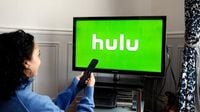Disney is once again raising the curtain on higher prices for its streaming services, a move that’s become almost an annual tradition since the launch of Disney+ in 2019. Starting October 21, 2025, subscribers across the United States will face steeper monthly bills for Disney+, Hulu, and various streaming bundles, with some plans jumping by as much as $3 per month. The announcement, which began reaching customers on September 23, 2025, comes at a time when both industry competition and consumer frustration are reaching new highs.
According to Variety, the standalone Disney+ plan with ads will see its price rise from $9.99 to $11.99 per month. If you prefer your streaming without interruptions, the Disney+ Premium (no ads) plan is climbing from $15.99 to $18.99 per month. Hulu’s ad-supported plan matches this increase, jumping from $9.99 to $11.99 monthly, while the ad-free Hulu tier remains unchanged at $18.99. ESPN Select, the slimmed-down version of Disney’s sports offering, will now cost $12.99 per month, up from $11.99. And if you’re eyeing a bundle, brace yourself: the ad-supported Disney+ and Hulu bundle rises to $12.99 from $10.99, and the Disney+, Hulu, and ESPN Select Bundle Premium (ad-free Disney+ and Hulu, with ad-supported ESPN+) leaps from $26.99 to $29.99.
For those who prefer to pay annually, the pain is even sharper. As reported by HowToiSolve, the Disney+ Premium annual plan is jumping from $159.99 to $189.99—a $30 increase in one go. And while some bundle prices, like the ad-free Disney+ and Hulu combo, are holding steady at $19.99 per month, most options are inching upward across the board. Even the all-in Disney+, Hulu, and HBO Max bundle will cost $19.99 with ads (up from $16.99) or a hefty $32.99 without ads (up from $29.99).
This marks the fourth consecutive year of price increases for Disney’s streaming services, a trend that began with the modest $6.99 monthly launch price for Disney+ in November 2019. As Tom’s Guide points out, the service’s price has soared over 70% since then, outpacing inflation and leaving some long-time subscribers in places like New York feeling the squeeze more acutely due to cumulative past hikes and higher local costs.
What’s driving these relentless increases? Disney, like its competitors, is facing ballooning costs for content production, licensing, and the infrastructure required to stream to millions of homes. The company has poured billions into exclusive series, blockbuster movies, and original programming to lure new viewers and keep existing ones hooked. But as Fox Business highlights, the streaming wars have only intensified, with Warner Bros. Discovery (owner of Max), Amazon (Prime Video), and Netflix all raising their own subscription fees over the past year. Platforms are also consolidating, cracking down on password sharing, and introducing ad-supported tiers to remain profitable in a crowded field.
Yet, for Disney, higher prices are only part of the story. The company has been grappling with subscriber churn and public relations headaches. Earlier in 2025, a crackdown on password sharing led to the loss of more than 700,000 subscribers, echoing the backlash Netflix faced with a similar move. More recently, Disney-owned ABC suspended "Jimmy Kimmel Live!" after Kimmel’s controversial comments about the killing of conservative activist Charlie Kirk. The suspension sparked a boycott movement on social media, with frustrated viewers encouraging each other to cancel their Disney+ subscriptions. Although Disney reversed the decision and announced the show’s return, major TV station groups like Nexstar and Sinclair declared they would not air "Jimmy Kimmel Live!" for the time being, keeping the controversy alive.
Disney, for its part, has remained tight-lipped about the rationale behind the timing of these price hikes. A spokesperson declined to comment further to Variety when asked about the increases. However, the company did confirm that it had been planning the fee changes for weeks, and notifications began rolling out to customers on September 23.
Looking ahead, Disney is also preparing for a major shift in its streaming strategy. After fully acquiring Hulu in a deal with Comcast this June, the company plans to shut down Hulu as a standalone app and merge it into Disney+ by 2026. Despite this integration, customers will still be able to purchase Disney+ and Hulu as separate plans if they wish. The move is part of Disney’s broader effort to streamline its offerings and compete more effectively against rivals with massive content libraries and bundled services.
For budget-conscious households, the latest price hikes are a tough pill to swallow. As Tom’s Guide notes, streaming was once the cheaper, more flexible alternative to cable. Now, with nearly every major platform raising rates and exclusive content spread across multiple services, many families are reevaluating just how much “Disney magic” is worth. For some, the answer may be to downgrade to ad-supported plans, switch to annual billing for savings, or hunt for promotional deals. Others may simply hit the cancel button, especially if their favorite shows are caught up in controversy or unavailable due to affiliate station boycotts.
Disney is betting that its deep catalog—think Marvel, Star Wars, Pixar, and National Geographic—plus big-name originals like "The Mandalorian" will justify the higher costs and keep fans loyal. But with the company’s upcoming lineup described as "thin" by Tom’s Guide and customer patience wearing thin after repeated price hikes, it remains to be seen whether content alone will be enough to offset frustration over rising bills.
For those determined to stick with Disney+, there are still ways to soften the blow. As suggested by HowToiSolve, switching from premium to ad-supported plans can save $6 a month, and choosing annual billing can lock in a lower effective rate if you’re committed for the long haul. Bundling services or watching for special promotions can also help, as can trimming unused add-ons or pausing subscriptions during low-use months—just be sure to check for any restrictions on pausing or canceling your plan.
Ultimately, the latest round of price hikes is a sign of the times: streaming is no longer the bargain it once was, and the competition for viewers’ wallets is fiercer than ever. Disney’s challenge now is to convince subscribers that the magic is still worth the money, even as the cost of admission keeps climbing.





